The Mad FeastAn Ecstatic Tour through America’s Food

A richly illustrated culinary tour of the United States through fifty signature dishes, and a radical exploration of our gastronomic heritage.
Following his critically acclaimed Preparing the Ghost, renowned essayist Matthew Gavin Frank takes on America’s food. In a surprising style reminiscent of Maggie Nelson or Mark Doty, Frank examines a quintessential dish in each state, interweaving the culinary with personal and cultural associations of each region. From key lime pie (Florida) to elk stew (Montana), The Mad Feast commemorates the unexpected origins of the familiar. Brazenly dissecting the myriad intersections between history and food, Frank, in this gorgeously designed volume, considers politics, sexuality, violence, grief, and pleasure: the cool, creamy whoopie pie evokes toughness in the face of New England winters, while the stewlike perloo serves up an exploration of food and race in the South. Tracing an unpredictable map of our collective appetites, The Mad Feast presents a beguiling flavor profile of the American spirit.
Matthew Gavin Frank has previously written about everything from wine-making in a tent in Italy to the social hierarchies of a pot farm in California. He teaches creative writing and lives in Marquette, Michigan.
A truly unique culinary tour of the U.S. Matthew Gavin Frank visits each of the 50 states. For better or worse he documents what he believes to be the signature dish from each state, with some unexpected choices. He backs up the reasons for his selections with historical insights, anecdotes as well as his own personal experiences. The results are documented in his fascinating new book The Mad Feast. Matthew Gavin Frank recently spoke to us about his trip, his interest in squid and pigeons and of course his book book.
BAF: I guess my first question is how did you go about compiling everything? It must’ve taken quite an effort just to get out there and see and do everything.
Matthew: I did indeed visit all 50 States. The book of course it’s 50 essays, one for each of the 50 U.S States beginning with a food typical of said U.S State and then digressing from there. I felt compelled to visit all 50. The active research out on the road took about 3 years, though I feel as if I’ve been researching this book for quite a bit longer than that given that I’ve been obsessed with food and basically working in the restaurant industry, I don’t anymore, but I worked in the restaurant industry for almost 20 years beginning at age 11 washing dishes in a fast-food chicken shack on the outskirts of Chicago, then climbing up through the fine dining world.
That sort of work actually lent itself to a vagabond lifestyle and I officially left my birth place at age 17 and just lived in a lot of different States also working in a lot of different restaurants. Inadvertently collecting information that later, surprisingly, I used in The Mad Feast.
BAF: It sounds like for idea, there was no ‘light bulb’ going off but more of an organic evolution.
Matthew: It was. I of course got to the point where I decided to embark on the mad folly of writing one chapter for each of the U.S States. Basically just trying to get at why we eat, what we eat, where we eat it. That certainly led me on kind of a crazy and supporting journey. I felt occasionally like a private detective scratching at blind alleys and interviewing a whole series of folks in order to grapple my way toward the answers to some of those questions.
BAF: I guess one exception is the Jersey chapter. That’s a terrific list of Jerseyisims.
Matthew: Thank you. That was a weird essay because I sort of hit a brick wall in my research. The food for New Jersey is the New Jersey Ripper which is simply, a deep-fried hot dog.
They actually have to make a special casing and theyre only a couple of companies in Jersey that do it. That could withstand the deep-frying without just the dog going to mush.
There is this place called Rutt’s Hut. That specializes in the ripper. The owner of Rutts Hut basically hang up on me a number of times. My research was incomplete, so I had to think of another way in which to engage the ripper in the essay.
BAF: How did you select items from each State? Some seem obvious like key lime pie but others like Jersey you could have gone anywhere.
Matthew: I began with the internet to be honest, and did a lot of research online and compiled a long list of potential food candidates for each States. Then I started pairing the list down in a number of ways; one, I wanted to grab gravitate toward the foods on which I could sort of construct an improvisational sort of Jersey style riff in these chapters. What sorts of foods had unusual shapes or textures or temperatures, sugar, spice. These sorts of things were involved with the first pairing down.
Then I kind of went through and narrowed it down basically holding each food item up to the particular State’s history, to elements of regional history and to see which foods kind of commented on and were in turn commented on by the kind of strange sorts of unspoken of regional histories.
From there I actually conducted a seemingly endless series of interviews with folks who lived in those States and asking their opinions. Invariably certain personal connections of mine wouldn’t be able to answer some of the questions I had and they would direct me to friends and friends of friends. Eventually I tumbled down the rabbit hole and got into conversations with chefs who used to cook Perloo in South Carolina in the 1970s and were telling me a lot of stories about it.
That kind of directed me toward the singular choices which were certainly difficult to make.
BAF: You chose the California Roll for California..
Matthew: I think I gravitated toward the California Roll because I actually spoke to a lot of folks who were part of the Japanese-American diasporas in California. They were talking to me a lot about that aspect of California’s regional history which kind of doodled and shaped its food culture today.
Writing about the California Roll which was kind of a perversion of sushi originally and it’s now become its own celebrated thing. I found that to be fueled by a whole host of interesting stories.
It’s just fueled by so many incredibly fascinating, sometimes beautiful, sometimes harrowing personal narratives that I gleaned via the folks whom I interviewed. It was actually tough to choose what to leave in and what to leave out. The information was so compelling.
BAF: When it came to the individual selections there must have been times when you must have had a hard time making that choice.
Matthew: Very much so. Just by the nature of the book because there is one State and then one particular food. There is kind of this forcing of identity onto the State via a particular foodstuff.
Depending on who I’ve talked to in each of these particular States or where I’ve given readings from the book, there are folks who come up to me afterwards and tell me that I nailed it. It was the perfect choice to encapsulate their version or their narrative that they curve themselves about their State.
Then I’ve had other folks come up to me and tell me that I completely missed the boat in choosing this instead of this. It’s funny how one can’t please everyone, but the choices had to be made.
BAF: It’s always going to be a controversial topic.
Matthew: Absolutely. People feel very passionately about food and appropriately so.
BAF: Was there anything that really took you by surprise?
Matthew: I did not go to West Virginia expecting to write about Rat Stew. That really surprised me. Of course Rat Stew as a State dish is a controversial choice. The dish kind of exploded in a lot of coal mining areas as a result of economic downturn and gustatory desperation.
What I found surprising is that history of the kind of desperation and being forced to create stew out of rats was one fueled by a very hedonistic narrative. Rats were actually popularly eaten in Bordeaux, France. They were actually seen as kind of a highbrow food. They were caught and basted with a sauce of shallots and red wine and then roasted over broken down Bordeaux wine barrels. It was seen as a highbrow food. But of course the narrative changed when the region and some of the economic factors changed when we moved the story to West Virginia.
BAF: You said you worked in the food industry, but you’ve written some very eclectic books. How do you go from Giant Squid to the States to Barolo wine? It sounds like a fascinating journey you’ve taken.
Matthew: I guess I’m obsessed with a whole lot of things. With The Giant Squid book, the book I wrote before the Mad Feast, it’s called Preparing the Ghost. Basically it’s about this guy Reverend Moses Harvey who in 1874, Saint John’s Newfoundland took the first ever photograph of the giant squid. That was the photograph that rescued the giant squid from the realm of mythology and finally proved its existence.
I saw that photo hanging in the Smithsonian National Museum of Natural History and I just tumbled down the rabbit hole of research there as I did with the food book. I guess I’m just easily obsessed.
I come from a long line of folks who suffer from OCD and instead of quadrupling checking the front door lock every night before bed, I just decide to latch on the giant squid or food as associated with each of the 50 U.S States and just obsessed that way for a while.
BAF: You’ve sampled all these recipes yourself. Whether it’d be the Rat Stew or the key lime pie or the beaver tail stew.
Matthew: I ate it all. Some of it was absolutely delicious and some of it was absolutely mediocre and some of it was just not good at all. But I thought that, “Oh, what a perfect microcosm for the country in which we live. It’s all of those things at lunch. So is our food and so is our history.” Yeah I tasted all of the things, I tested all of the recipes and it was certainly quite the journey.
BAF: It’s interesting that you’ve included recipes you didn’t like. You’re writing about the good, bad and the ugly for lack of a better phrase.
Matthew: I wanted the book to be more about ‘us’ than about me or at least us as I conceived it as I was researching State histories and the foods embedded therein.
Even more than wanting to arouse people’s appetites, I was hoping the book would do more than just make people hungry. I was hoping, even with some of the recipes that were less appetizing, the book would perhaps allow a reader as it allowed me during my research process to interrogate hunger and to interrogate the ways in which we eat in specific places.
I really wanted to kind of revise the ways in which we think about food and in turn read and write about food. Often times, one seafood describes with an easy adjective qualifying it. It’s either disgusting or it’s delicious or scrumptious or succulent. I wanted to go beyond the easy adjectives and really scratch at the particular foodstuff and see what its secrets were and see how it was leashed to these secret histories as corresponding to each State too. I wanted to get at some of that inner hidden stuff.
BAF: Other than the Rutt’s Hut guy who hung up on you. Were people generally eager to share or happy to tell their stories or did everybody keep secrets?
Matthew: I think it was all situation-specific. Some folks were very secretive especially when I was asking very pointed questions about some less lovely moments of that particular State’s history. For instance in South Carolina, the dish I was investigating was perloo which came over as part of the slave culture in the South Carolina years and years ago. The dish was created by the African-American diaspora there and so a lot of my meditation on perloo was tied into the State’s racist history because it was birthed out of that history.
Perloo, without that particular breed of historical racism, perloo would not exist. Would not be on so many menus in South Carolina today. We wouldn’t have so many variations of it today. Some of the questions I was asking were perhaps uncomfortable and some folks yeah, were incredibly reluctant to talk about some of these things, but to my surprise I found a lot of folks incredibly eager to talk about them. They really wanted to share those stories. They really wanted to tell me what they believe to be a narrative that encapsulated their State and how they felt about it. I met a whole lot of really interesting folks, an amazing cross section of America and I really learnt quite a lot.
BAF: When you research these dishes, like perloo with the interesting or infamous storyto them, are people nowadays aware of the history or is it just something that’s on the menu everywhere?
Matthew: For better or for worse, it’s the latter. I think it’s on the menu everywhere. I think there is a very, very small percentage of folks who sit down and order perloo who are aware of its history or who consciously think about it as they’re ordering it.
Of course I wasn’t aware of these histories before I started researching the book either and so I feel in a way the book, in spite of my original intentions became this kind of strange cockeyed revisionist’s take on U.S history. Reintroducing some of the secret histories that we haves since swept under the carpet to our narrative and unleashing them back up to the foods that we eat on a day-to-day basis and take for granted and don’t usually attach story to but who which are harboring all of these strange, meandering, beautiful, unfortunate stories that are part of the story of who we are and why we eat.
BAF: How would you approach a research let’s say for example like Vermont? How would you approach the State and the dish and how would you find all these interesting people?
Matthew: Well, once again, my process was different with each State depending on my history with it like had I lived there before in my life or if I had never been there.
It’s funny you asked about Vermont. I went to Vermont to do some research for this book. I had some friends who were running a little artisanal bread bakery in there, but I had no experience with Vermont. They recommended the Maple Creamy to me, which turned out to be the dish I chose for Vermont. It’s like this local Maple sauce. Vermont is famous for its Maple.
I did a little research on the internet first, but with the Vermont essay, as was the case with all of these. The internet wasn’t enough and even doing telephone interviews with chefs in each particular State or folks who run little ice cream stands in each particular State eventually wasn’t enough either.
I had to go there. I had to actually immerse myself in what the film maker of Werner Herzog likes to call the voodoo of place and just go there and observe and bask in the atmosphere. Then of course talk to people on the ground and eat with people there on the ground which is a form of research that brought out certain stories that just hanging out on the internet never would.
As it turns out, it’s funny, I was so seduced by Vermont when I was there that I actually decided to try and move there for a bit. I started living out of a tent in a friend’s garage, next to her Chrysler Lebaron as I was doing this research and she didn’t have an extra bedroom in the house so I had to set up a tent in her garage. I actually wrote about that in the Vermont essay in the book that actually became part of the essay.
BAF: What are you working on now? What’s next?
Matthew: I am actually working on a book about the role of carrier pigeons in Southern African diamond smuggling.
My wife is from South Africa and we ended up traveling the diamond coast. I’m thinking of North-Western South Africa and then up into South Western Namibia. I’ve always been obsessed with birds too actually. I feel like some serious bird watching really lies in my future but I thought yeah. I heard all these stories about and the ways in which carrier pigeons were used in the diamond smuggling syndicates and so I became interested. I’m just beginning to research that.
Booksaboutfood.com © 2015
“[A] raucous gastro-crawl through regional American cuisine.” — Jeffery Gleaves, The Paris Review Daily
“This crazy culinary cruise through America is as messy and wonderful as Iowa’s Loosemeat Sandwich. …This is no cookbook with practical recipes or a patronizing tour of backwoods eateries, but a meditation on our nation”s strange history that stares up at us from the plate, as tart as a Key lime and dense as Mississippi Mud Pie.” — Andrew Lawler, author of Why Did the Chicken Cross the World?
“Matthew Gavin Frank’s The Mad Feast is like a baby who wants to learn the world by putting everything in its mouth. If eating means bringing everything we’re not into our bodies, then this book—rich, exuberant, unexpected—explores how we’re contained within everything we bring into ourselves. It’s messy and playful; it pushes association to the brink of absurdity and then sits at that border, munching on a slice of cake or spooning some chowder. Every chapter reads less like reportage and more like incantation, assembling from local materials the particular ingredients necessary to cast a singular spell.” — Leslie Jamison, author of The Empathy Exams
“[Frank]’s produced a surprising, entertaining look at what Americans eat and why.” — Kirkus Reviews
“In The Mad Feast, Matthew Gavin Frank is our Merry Prankster of literary food writing, taking his readers on a mind-bending trip through the pork-belly of America. Lush, exuberant, and manically associative, this book is so much more than a collection of recipes (but it is that, too); it’s an ecstatic and essayistic exploration of culture, community, history, and philosophy. I could not put it down, and I keep going back for more.” — Steven Church, author of Ultrasonic: Essays, founding editor of The Normal School
Hummingbird Cake (Alabama)
Ingredients:
3 cups flour
3 cups sugar
1 teaspoon cinnamon
1 teaspoon baking soda
1 teaspoon salt
6 eggs
1 cup oil
3 bananas, chopped
1 cup crushed pineapple
1 cup pecans
Mix first six ingredients in mixing bowl. Beat eggs and then add to flour mixture. Add oil to mixture followed by bananas, pineapple, and pecans. Bake at 350 degrees for 25-30 minutes or until golden brown.
-Something Special Deli-
From THE MAD FEAST by Matthew Gavin Frank


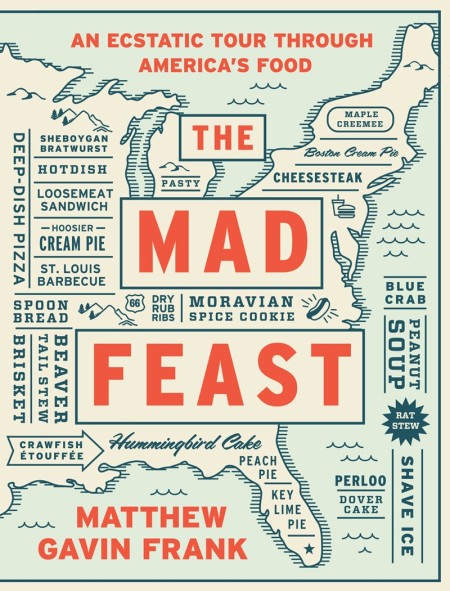


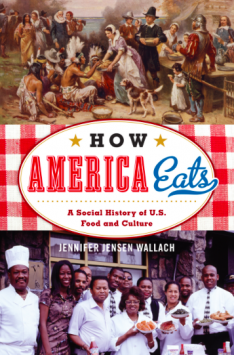
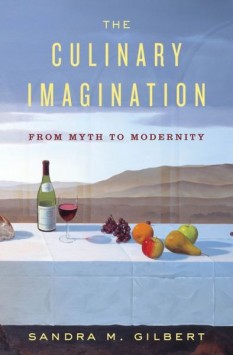
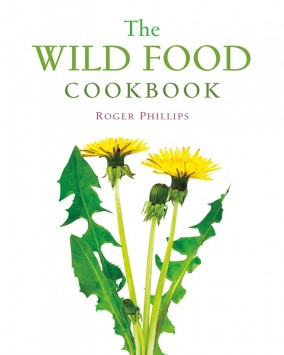
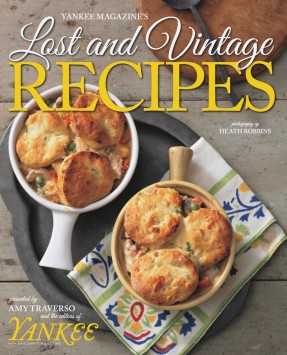
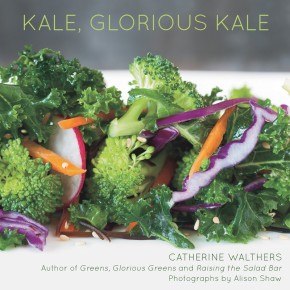
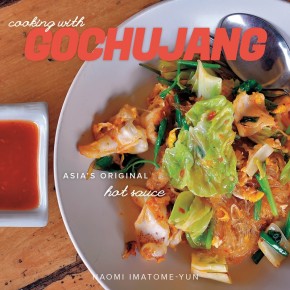
Leave a Reply